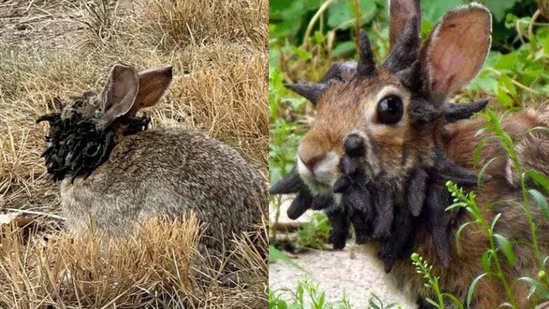Strange ‘horned rabbits’ invade Colorado neighborhoods — Here’s what you need to know

Wild rabbit in Colorado with Shope papilloma virus growths on its head
Residents of Fort Collins and other parts of Colorado have been startled by sightings of wild rabbits sporting strange, horn-like and tentacle-shaped growths on their heads and faces. Social media photos of the animals — showing dark, spiny protrusions resembling toothpicks or quills — have fueled speculation about potential diseases.
According to wildlife officials, the unusual appearance is caused by the Shope papilloma virus, a disease that produces wart-like tumors, often clustered around a rabbit’s ears, eyelids, and face. Although the growths can look alarming, experts emphasize the virus poses no danger to humans, pets, or other wildlife.
The disease spreads only between rabbits, most often through insect bites from mosquitoes and ticks. Research from the University of Missouri notes it is most common in cottontail rabbits in the Midwest, though domestic rabbits can also be affected.
Strange Sightings in Fort Collins
Locals have reported repeated encounters with the afflicted animals — including one rabbit that returned to the same backyard two years in a row, each time with more severe growths. Some initially feared the animals might be carrying plague or another hazardous illness.
Descriptions from residents range from “black quills” to “crusty growths” covering the face. “I thought he’d die off during the winter, but he didn’t,” Fort Collins homeowner Susan Mansfield told NBC affiliate KUSA. “He came back a second year, and it grew.”
What Is Shope Papilloma Virus?
The Shope papilloma virus causes benign tumors that, in rare cases, can become cancerous. While the condition doesn’t usually impact a rabbit’s overall health, large growths can interfere with eating, breathing, or vision. The virus is most active in warmer months when insect populations peak.
There is no cure, though tumors can be surgically removed in domestic rabbits. Colorado Parks and Wildlife advises residents to observe the animals from a distance, as they are not considered dangerous.

